Research Article Open Access
Treating Balance Disorders with Ulllt Acupuncture Stimulation: A Further Pilot Study on Normal Subjects Confirms Clinical Applicability of Treatment
| Fabio Scoppa1,2, Michele Gallamini3* and Gabriele Belloni1,2 | |
| 1Posturology, Faculty of Medicine and Dental Surgery, Sapienza University of Rome, Rome | |
| 2Chinesis I.F.O.P. Osteopathy School, Rome | |
| 3R&D Medical Devices Freelance Consultant, Italy | |
| *Corresponding Author : | Michele Gallamini R&D Medical Devices Freelance Consultant Genova, GE, Italy Tel: +39 3355683177 E-mail: michele.gallamini@fastwebnet.it |
| Received January 20, 2016; Accepted March 02, 2016; Published March 15, 2016 | |
| Citation: Scoppa F, Gallamini M, Belloni G (2016) Treating Balance Disorders with Ulllt Acupuncture Stimulation: A Further Pilot Study on Normal Subjects Confirms Clinical Applicability of Treatment. J Nov Physiother 6:285. doi:10.4172/2165-7025.1000285 | |
| Copyright: © 2016 Scoppa F, et al. This is an open-access article distributed under the terms of the Creative Commons Attribution License, which permits unrestricted use, distribution, and reproduction in any medium, provided the original author and source are credited. | |
Visit for more related articles at Journal of Novel Physiotherapies
Abstract
In previous articles it has been verified that balance parameters collected in quiet upright stancetests can be modified by stimulation of peripheral acupuncture points with a novel type of Ultra-Low-Level-Laser device. This manuscript describes a further test in the form of a pilot study in anticipation of a more comprehensive clinical trial. In the study both the possibility of identifying balance deficits of proprioceptive origin from the Romberg Test on a force platform have been verified, as well as the beneficial effect obtained by the stimulation of 8 acupuncture points with the above-cited novel laser device. Our test confirms the effectiveness of this treatment, which is painless, devoid of any major contraindication, and can be performed easily and quickly even by physiotherapists that are not specifically familiar with Traditional Chinese Medicine. The method, which presents practically no contraindications, could be massively applied to prevent the Risk-Of-Fall originated by proprioceptive deficit thus achieving significant socio-sanitary benefits through a quick, painless and non-invasive treatment. The results of this pilot study will be of help in designing an appropriate Clinical Trial.
| Keywords |
| Balance disorders; Proprioceptive deficit; Laser acupuncture |
| Background and Objectives |
| Foreword and background |
| Nowadays balance tests are performed on force platforms. This test is the natural technological evolution of the test proposed by Professor Romberg in 1836 to diagnose proprioceptive deficit [1-3]. |
| Previous studies have demonstrated the possibility of beneficial modifications of quiet stance balance keeping performance through stimulations applying Traditional Chinese Medicine (TCM) criteria [4,5] and have confirmed the abundant evidence already available [6-9]. The improvement has been assessed through the modification of balance parameters measured on force platforms [10]. |
| The observed improvements in different clinical conditions suggest a common source of impairment in a proprioceptive deficit that is most likely associated with the presence of noxious musculoskeletal stimuli [11-14], sometimes even below the perceptive threshold [15]. |
| Objective |
| As reported [5], a preliminary test on four subjects (2+2 controls) has evidenced the capability of a novel Ultra-Low-Light-Level-Laser (ULLL) to effectively reduce closed eyes sway both in a patient affected by a known disabling pathology and in a patient suffering from a more common musculoskeletal condition. With a view to designing a full Randomized Controlled Trial (RCT) on a statistically significant sample of “compensated” senior citizens, it was decided to verify both these findings and the feasibility of the test itself on a population of cooperating young normal individuals. |
| The Test |
| The test was performed within the Posturology Master Course held at “La Sapienza” University (Rome – Italy) with the active involvement of students participating as test subjects. The students were also involved in the examination of balance tests and acted as assistants during the test. |
| The purpose of this demonstrative test, fully within the framework of the professional training program of the course, was as follows: |
| • To verify the assumptions concerning sensitivity and specificity of the force platform balance test and of the chosen parameters/ indicators; |
| • To confirm the clinical effectiveness of the peripheral reflexology treatment of proprioceptive deficit; |
| • To design a protocol for a specific RCT. |
| Materials and Methods |
| The sample |
| 29 normal and normo-functional subjects, free from any invalidating pathology and suitably homogeneous for age and anthropometrics, were subdivided into two groups based on the outcome of the Baseline Test and specifically on the Closed Eyes Baseline Test Parameter SPF (SPF = Score of Postural Functionality). |
| All the subjects, previously informed about the test itself, gave their formal consent (Table 1 and Figure 1). |
| • 14 of the 29 subjects, the TRT Group, who showed less efficient balance control, were selected to receive the reflexology treatment, which was administered by a Physiotherapist with specific Traditional Chinese Medicine (TCM) expertise. |
| • 15 subjects, with more efficient balance control, the NO-TRT Group, did not receive any treatment and acted as Control of any modification resulting from the treatment. |
| All subjects received three tests: |
| • Baseline Closed Eyes |
| • Baseline Open Eyes |
| • Endpoint Closed Eyes (at about three hours from baseline). |
| Methods |
| SPF for selective assignment to the groups: SPF is a parameter set up by putting together an array of parameters and indicators provided by COP path processing. If considered separately, all the known parameters, have only a limited diagnostic value as they are typically characterized by a rather large Variation Coefficient. |
| Nevertheless, as might be expected, the calculated parameters display a relatively high degree of cross correlation and, if taken together, are to some extent capable of providing an “all-around” view. |
| To this end, SPF, a multidimensional indicator resulting from the sum of “out-of-range” parameters, has been proposed. |
| This indicator is calculated by assigning a logic indication (Score = 1) to each of 63 parameters (or indicators of statistically demonstrated cross-correlation) lying beyond ±2 Std Dev from their average value and summing the resulting scores. SPF ranges, therefore, from 0, for the fully functional subjects, to 63, for the least functional ones. |
| In order to distinguish between functional and dysfunctional subjects, the Receiver Operation Characteristics (ROC) [16,17] evaluation criteria was applied to the SPF as it is generally applied for the Sensitivity/Specificity curve. This analysis resulted in the definition of 9 as the threshold value between normal (SPF ≤ 9) and dysfunctional (SPF>9). |
| Materials |
| Force platform balance test: Subjects were tested on the ARGO® RGMD SpA (Genoa – Italy) Force Platform with joined parallel feet, first with closed, then with open eyes. Environmental conditions were compliant with the standards [18]. Acquisition and parameter calculation satisfied the most recent indications [19] for test duration – 45 seconds - although the first 5 seconds, considered as an adaptation phase, were not taken into account in parameter calculation – and sampling frequency was set at 100 Hz. Table 2 indicates the parameters provided by the device. |
| Laser acupunctural stimulation |
| Biolite® RGMD SpA (Genoa – Italy) was used. The device had already been applied in similar previous works. |
| The device consists of a red laser light (λ=635 nm) emitter (Electrical Peak Power Pp 3 mW Typical Optical Peak Power 2,3 mW) that is modulated through a square wave 100 Hz modulation with 1% Duty Cycle for an average power PAVG = 0.023 mW. |
| Stimulation is obtained by manually flashing 20 half second emissions at a distance of about 25 mm over the skin with a spot size of about 4 mm in diameter. The total energy for a single point stimulation is therefore <0.3 mJ and its density is less than 2.5 mJ/cm2. |
| These values are well below those generally believed to be minimally effective [20]: nevertheless, these tiny stimulations have been found to be effective in several previous works [21-23]. |
| On the somewhat surprising effectiveness of Low and Very-Low power laser therapy a consolidated and highly qualified literature exists [24]: Biolite levels are indeed even lower than those indicated in this literature and the device has thus been classified as an Ultra-Low- Light-Level-Laser. |
| Available evidence indicates that its effectiveness on acupoints depends on its capability to interact with the Extracellular Soft Tissue Matrix and have an effect on fibroblast growth and on accelerated integrins and collagen synthesis [25]. It has been demonstrated that these characteristics are power and modulation dependent and seem to disappear at higher power levels or with different modulation parameters. |
| Applied protocols envisage the stimulation of sequences of acupoints that have been chosen from among those known to evoke systemic regulation activity [26]. |
| In particular it is worth mentioning the cross-like stimulation pattern deriving from the oldest acupuncture indications [27] which suggests bilaterally stimulating 4 meridians of two different pairs: internal-external (Intestine LI and Stomach ST) [28] and proximity (Kidneys KI and Urinary Bladder BL) [29]. |
| The protocol proposed for the treatment of proprioceptive balance deficit involves bilateral stimulation in particular (according to a crosslike pattern) of the following points LI4 – Hegu; ST36 – Zusanli; KI3 – Taixi; BL60 – Kunlun. This combination of points has already been tested for this application and in the reduction of painful spine related conditions [30] (Figure 2). |
| Statistical Analysis |
| After calculating MEAN, MEDIAN and STD. DEV., it was checked whether the distributions of sway parameters were homo- or heteroscedastic and the two tailed t-test applied accordingly. |
| All calculations were performed with MS Office Excel 2013 and applying the specific functions. |
| The Test |
| Baseline balance test |
| The most significant balance parameters are listed in Table 3. According to previous studies, subjects with some evident “dysfunction” are clearly identifiable by an SPF score>9 (Table 3). |
| However, for the purpose of obtaining numerically comparable groups (see Methods above), it was decided that all subjects with SPF ≥ 2 in the Closed Eyes test were to receive the Biolite® treatment (Subjects ID 2; 3; 4; 5; 6; 7; 8; 10; 15; 16; 19; 25; 29; 30). Figure 3, the selected cutoff value of SPF=2 in order to have comparable groups results in a 50% population with SPF ≤ 2 (Figure 3). |
| Test data |
| Figures 4 and 5 show the graphs of Sway and Sway Density Parameters: the two Groups [TRT and NO-TRT] are clearly identified. |
| The same graphs show both the BASELINE ant FINAL values (Individual and Mean Value). The Normality values are also plotted on the same graphs for immediate reference. |
| To be noted: |
| • The almost negligible differences between BASELINE and FINAL measurements for the NO-TRT Group which also show remarkable proximity to the Normality Values; |
| • The immediately apparent shift towards “Normality” values for the TRT Group. |
| Final measurement |
| All subjects (Closed Eyes only) were tested at an average of 3 hrs from the Baseline test and no less than 15 minutes from the Biolite® treatment for the TREATMENT Group. As mentioned, the data are plotted in Figures 3 and 4. |
| Main data |
| The T-Test was then applied in order to compare: |
| a) The two Groups at Baseline test |
| b) The two Groups at Final test |
| c) Final vs. Baseline for both Groups |
| The summary of these data is shown in Table 4. |
| Discussion |
| General results |
| Although quite apparent from the graphs, from a statistical point of view these modifications are generally non-significant. However, by comparing the differences between the two groups at Baseline and Final tests, it can easily be seen that the TRT and NO-TRT Groups are coming closer while Baseline and Final test for the CTRL Group remain very close, implying that the treatment has made a difference (Figures 4 and 5). |
| From a statistical point of view, to give the immediate perception of the significance of data for the compared closed eyes balance parameters |
| • SP = Sway Path |
| • SA = Sway Area |
| • AE = Area of the 95% Confidence Ellipse |
| • ST = Mean Stay Time |
| • SD = Mean Spatial Distance |
| • SPF = Score of Postural Functionality, |
| Under the differences between the mean values we have given a background color to the cells containing the calculated P value obtained by the two tailed T-Test on the groups. When Red, the P is <0.05, when Blue 0.05<P<0.20. |
| Baseline test differences: As all the subjects generally lie within the normality range (SPF ≤ 9), the similarity between the two groups is to be expected. Even more so with such small quantity samples. Nevertheless, simply choosing a SPF threshold value of 2, the two groups are in fact significantly different. |
| POST vs PRE differences: The differences in the TRT Group between BASELINE test and FINAL test are apparent as we have seen but not significant. However, the differences for the NO-TRT group are much less significant suggesting an essential stability of the measured quantities. |
| Final test differences: Considering the significance value of the BASELINE differences between TRT and NO-TRT Group, results suggest a much stronger similarity between the two groups. |
| Critical aspects |
| The test was performed as part of course training and its encouraging results strongly suggest the test should be repeated: |
| a) with more subjects and, if possible, with narrower SPF stratified samples subdivided into TRT and NO-TRT groups; |
| b) Performing a further measurement the following day. According to TCM indications, the beneficial effects of acupuncture treatment will be fully deployed after more than three hours and will more likely detected in an assessment performed after 24 hrs. |
| SPF parameter |
| The SPF variation is strongly significant and quite capable of allowing discrimination between individuals. |
| Although this parameter has to undergo a more extensive testing on severely impaired patients in a clinical environment, it may possibly provide a reliable synthesis of quiet stance balance functionality. Its adoption and correlation with clinical tests (Berg Balance Scale [31], Tinetti [32], Functional Independence Measure or FIM Scale [33], Falls Efficacy Scale International or FES-I [34]) could perhaps open the way to a dependable assessment of the Risk-Of-Fall, one of the major concerns for the senior population. |
| Sway density |
| This is a “structural” parameter [35-37] that offers a novel approach to balance performance analysis. Derived from a non-linear processing of the COP Path, it is extremely helpful in the assessment of the most likely origin of the balance dysfunction. By analyzing the COP Pattern it is possible to identify a sequence of temporary slowdowns followed by rapid displacements to a new stabilization point. Through a specific algorithm it is possible to find the Instantaneous Stabilization Points and to calculate the length of the stay around the points as well as the time and spatial displacement between the points. Averaging these data three new parameters can be proposed, namely: |
| • The Mean Stay Time, expressed in seconds. |
| • The Mean Spatial Distance, expressed in mm. |
| • The Mean Time Difference, expressed in seconds. |
| • Through the analysis of these data it is possible to ascertain the presence of proprioceptive and/or control deficit. |
| • The Mean Stay Time value in “Closed Eyes” recording seems likely to be affected by the intensity and amplitude of afferent interferences capable of unbalancing the subject. Therefore the higher the Mean Stay Time value, the better. |
| • The Mean Spatial Distance between subsequent Stabilization Centers appears to be proportional to the space required by the subject to regain balance. For this reason it can be regarded as a measure of efficiency of postural control. Therefore the smaller the Mean Spatial Distance value, the better. |
| • Given the above indications, with regard to our test, from the Sway Density Graph of Figure 5 above, it is quite apparent that almost all the Treatment Group subjects – who were later subjected to Biolite® treatment – do show low Mean Stay Time values. |
| Proprioceptive deficit detected by force platform balance test |
| The ratio between Sway Parameters (Closed Eyes vs. Open Eyes) is the classical measure of the proprioceptive deficit, defined as the Romberg Quotient: a Romberg Quotient in excess of 2 in the Sway Path and in excess of 3 in the Sway Area values is considered specific to dysfunctional status. |
| Apparently even more specific is the criterion of the difference between SPF values (Closed Eyes minus Open Eyes). Even more so when the Open Eyes values are within normal range (Figure 6). |
| Acupunctural stimulation |
| The observed differences confirm the effectiveness of acupuncturelike ULLLT stimulation. The beneficial effects seem to be dependent on a close link between proprioceptive signals and noxious stimuli – sometimes even those below the pain perception threshold – that are reduced by acupuncture-like stimulation [38]. |
| Conclusion |
| The proposed laser-acupunctural stimulation by Biolite® is effective, quick and easy to administer. It is devoid of any major contraindication and, being painless, enjoys the highest patient compliance. |
| The clinical application of the Force Platform balance test seems capable of detecting the subjects prone to some risk of fall [39] which, at least in most cases, can be effectively treated with Biolite® in order to reduce the proprioceptive deficit. |
| The adoption of the Biolite® protocol in clinical routine is likely to prove extremely beneficial and cost-effective. |
| Even a glance at the prevalence of the common event known as “fall-in-the-elderly” and of the social effects involved [40,41] would be enough. |
| This is even more true in the case of senior citizens experiencing “frailty”, both because frailty by itself often entails a motor control deficit and because frailty can amplify the negative effect of an occasional fall. Reliable references [42] actually indicate that the likelihood of an occasional fall actually grows with the loss of control redundancies experienced in frailty, exacerbated by nociceptive interferences. The topic is very frequently treated in medical literature and there seems to be a converging consensus on this correlation between pain, frailty and motor control deficits [43-47]. |
| Acknowledgement |
| The authors wish to thank G. Piastra MD for his valuable suggestions and support in data processing and assessment. |
| Conflict of Interest – Funding |
| The authors declare the absence of any conflict of interests. The test was performed without any funding. |
References |
|
Tables and Figures at a glance
| Table 1 | Table 2 | Table 3 | Table 4 |
Figures at a glance
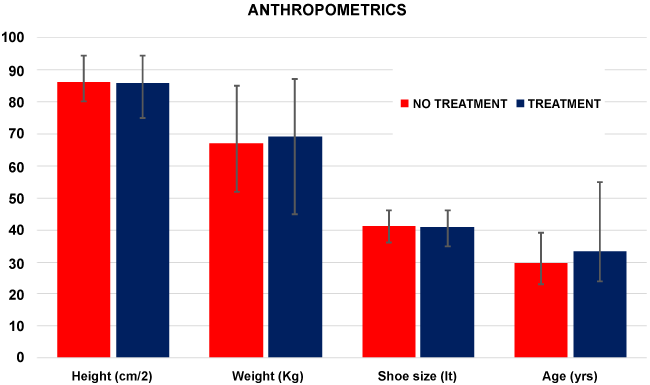 |
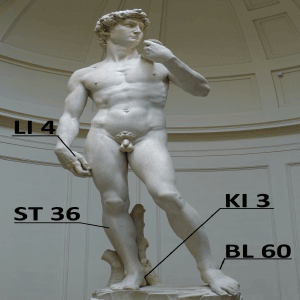 |
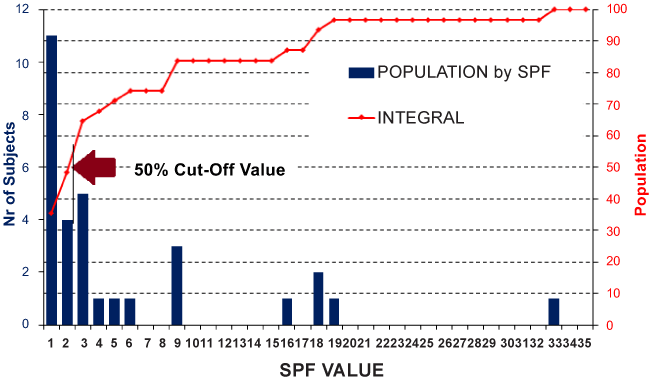 |
| Figure 1 | Figure 2 | Figure 3 |
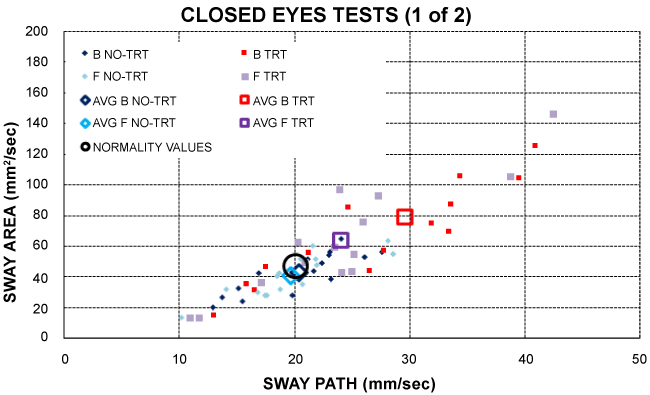 |
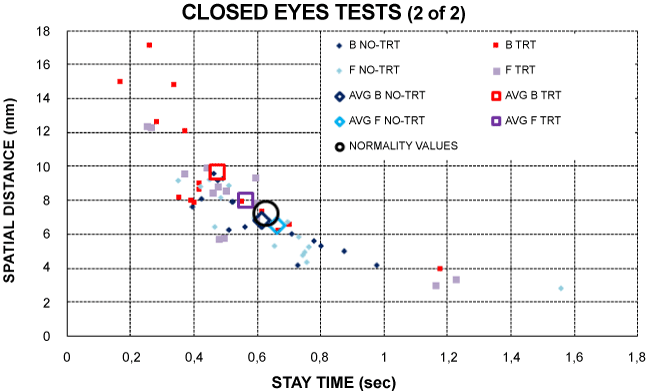 |
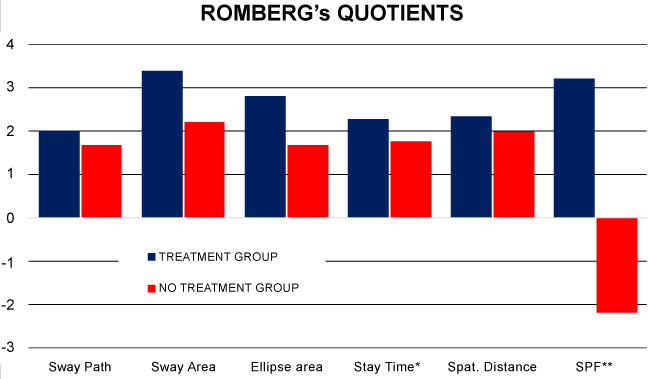 |
| Figure 4 | Figure 5 | Figure 6 |
Relevant Topics
- Electrical stimulation
- High Intensity Exercise
- Muscle Movements
- Musculoskeletal Physical Therapy
- Musculoskeletal Physiotherapy
- Neurophysiotherapy
- Neuroplasticity
- Neuropsychiatric drugs
- Physical Activity
- Physical Fitness
- Physical Medicine
- Physical Therapy
- Precision Rehabilitation
- Scapular Mobilization
- Sleep Disorders
- Sports and Physical Activity
- Sports Physical Therapy
Recommended Journals
Article Tools
Article Usage
- Total views: 12005
- [From(publication date):
April-2016 - Mar 29, 2025] - Breakdown by view type
- HTML page views : 11096
- PDF downloads : 909
